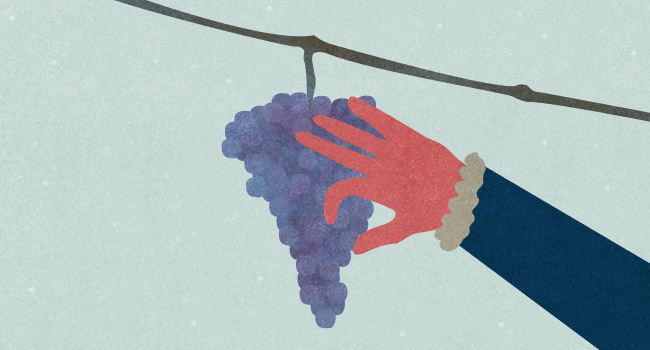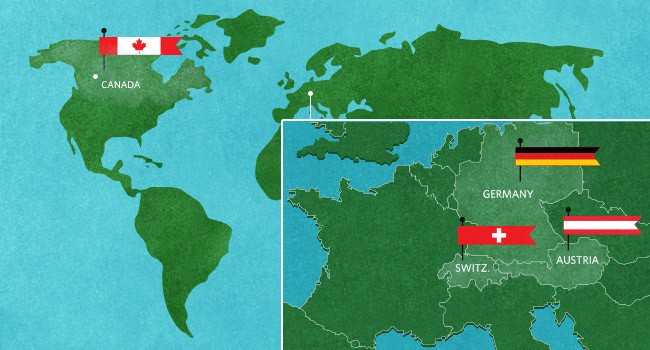Due to its very concentrated nature and unique production method, good quality ice wines come with higher price tags. They are most commonly produced from Riesling and Vidal grapes, although you can technically produce an ice wine from any type of grape, even red. The flavor characteristics are normally associated with rich honey, hay and a clean freshness that you don't get from any other type of dessert wine.
Ice wines have been labelled as some of the most risk-bearing wines to produce, given how they heavily rely on a regular pattern of frost each year. If the cold weather and frost don't show, the whole crop is likely to rot and be rendered useless.
What makes a wine an ice wine?
Most grapes are harvested when the weather is most bearable, but for ice wines, it's the opposite. The grapes are only hand picked from the vines when they are completely frozen (usually at about -10°C/14°F). They are then pressed immediately while still in their frozen state, which usually means the entire procedure must be carried out overnight and can be quite costly.
This process ensures the vines will be extra sweet, as they are pressed immediately so that the frozen ice (what would be water) floats to top of the juice in the vat and can be scooped out with ease. What you're left with is a very concentrated and flavorsome juice.
It's important to note that ice wines are very different than other dessert wines such as Tokaji and Sauternes. Unlike these styles, ice wines don't need what is called noble rot or botrytis to make the wine sweet. All of the elements that are needed for flavor such as the solids, skins and sugars remain unfrozen and incorporated within the juices underneath the ice, thus retaining the sweetness. The downside is that you only get a very limited batch of wine from each harvest—but the quality is usually exceptional.
Where do ice wines come from?
Due to the temperature requirements, ice wines are only grown in very selective regions. There needs to be a regular period of frost each year to ensure a successful harvest, making Canada, Germany, Switzerland and Austria among the four most common ice wine producing regions on the planet.
What should you pair them with?
Ice wine is generally very sweet, which is advantageous as it means it can be used as a dessert wine, an aperitif, or a wine to pair with the main course. It typically goes very well with anything spicy, salty, fruit-based or with aged cheeses.
For more wine stories, interactive learning guides and a whole lotta' wine follow Adrian on Vivino.

